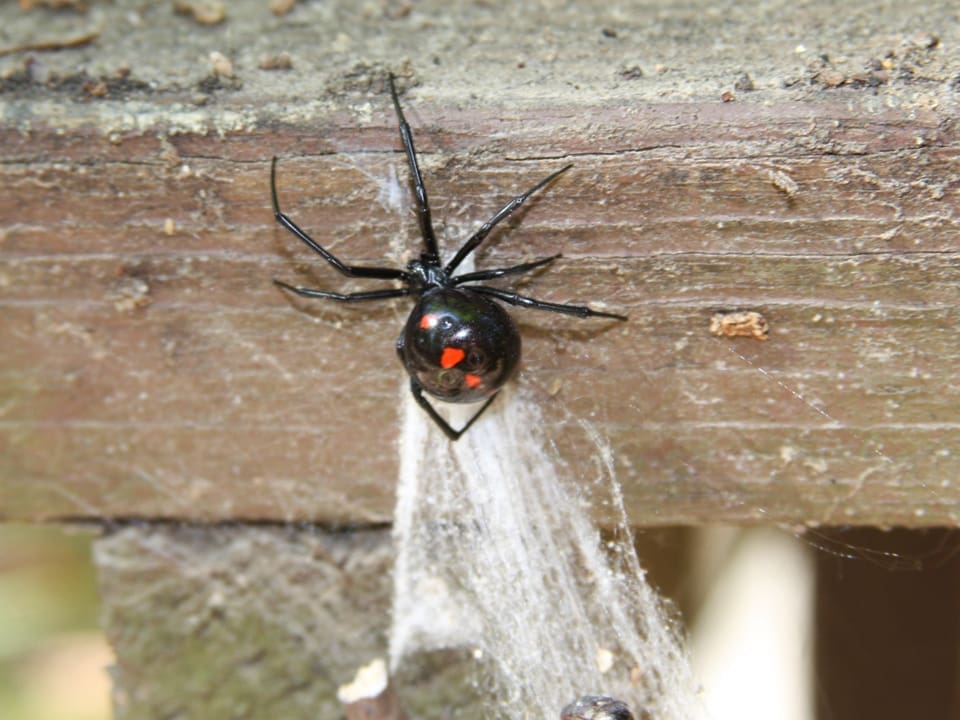By Trish Svoboda
For the first time in about a decade, Kansas State University entomologist Jeff Whitworth is receiving calls about the black widow spider. Currently, the black widow can be found around outbuildings, garages, old sheds, and similar areas. Whitworth said the ones he’s seen are producing egg cases.
The female black widow is easily identified by a red hourglass shape on the underside of its black abdomen. In contrast, the mature male is typically brown to blackish with red and black stripes. The spider gets its name from the common belief that the female eats the male after mating, although this rarely occurs in nature.
A black widow spider bite is rarely fatal but can cause pain, fever, increased blood pressure, sweating, and nausea. Medical attention should be sought if bitten. Homeowners should be more concerned about the spider’s rapid reproduction, as a single female can produce up to four egg casings a year, each containing 100 to 200 eggs. To manage black widows, destroy any cobwebs, and keep wood piles and clutter away from the house. If you find an egg case, destroy it by burning it, dousing it in alcohol, or squashing it. If a black widow lands on you, flick it off and step on it rather than smashing it against your body to avoid its fangs penetrating your skin. If bitten, contact a healthcare provider and bring the spider if safely possible.
A more familiar spider to Kansans is the brown recluse, which Whitworth says is also active and currently laying eggs. He said as the weather gets warmer, they become more active. A brown recluse bite is almost never fatal to humans. Similar to the black widow, a bite can be painful and cause an ulcerous wound. However, bites usually occur only if you brush up against them or if they fall on you.













